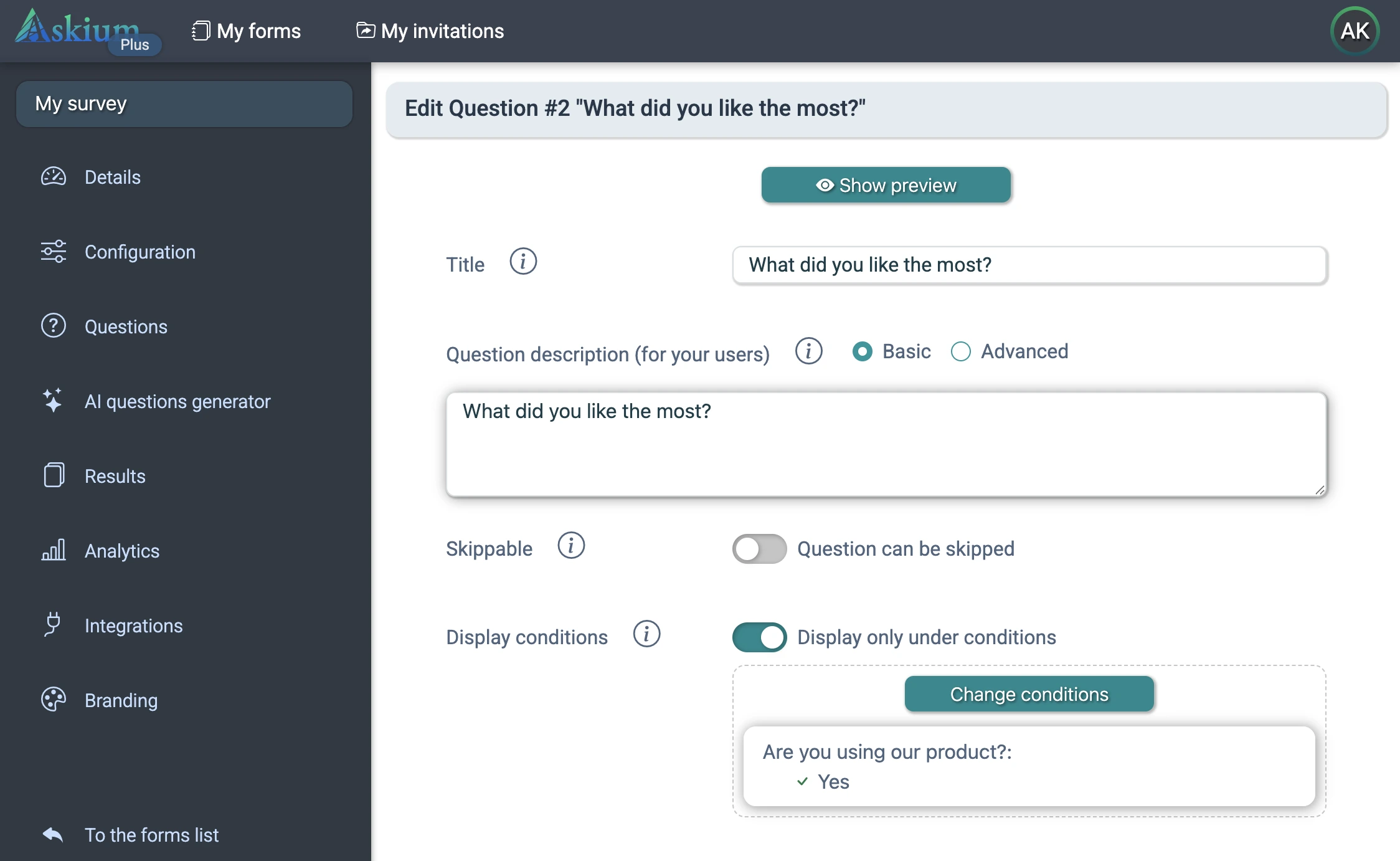
Online builder for forms, surveys, tests, quizzes, and exams.
5 Mistakes When Conducting Surveys (and How to Avoid Them)

Even a simple survey can easily turn into a source of noisy data. Here are five of the most common mistakes in survey design — and how to fix them with Askium.
1. Leading or Ambiguous Questions
A question like “Do you like our convenient interface?” already nudges respondents toward a positive answer. Use neutral wording, avoid double negatives, and define any unclear terms.
2. Overloading the Survey with Too Many Questions
The more questions you add, the lower your completion rate and data quality. Long surveys fatigue respondents and distort answers toward the end.
- How Askium Helps: split the survey into thematic sections and display only relevant blocks using branching logic.
3. Poor Question Order
Start with easy, general questions and move to more specific ones. The “general to specific” flow reduces drop-offs and improves accuracy.
- How Askium Helps: customize section order and use branching to dive deeper only into relevant topics.
4. No Branching (Conditional Logic)
Showing the same questions to everyone creates noise and frustrates respondents. Branching logic allows you to display questions based on previous answers, shorten the survey, and improve relevance.
How to Set Up Branching in Askium
- Add a display condition for a question. Specify which previous answers must be selected for the question to appear.
- Think through question order carefully. This ensures conditions check answers to questions that have already been asked and keeps the logic clean.
- Combine conditions. Use AND/OR logic to create flexible scenarios.
- Hide irrelevant blocks. If a condition is not met, the question is skipped automatically.
- Test before publishing. Askium will alert you if a condition is disconnected from previous answers.

Example: If your survey includes “Do you use our product?”, then “What do you like most about it?” should only appear if the respondent answered “Yes”. Respondents who selected “No” will skip this question and go to the next topic.
Result: respondents see only relevant questions, surveys are shorter, and the data is more accurate.
5. Ignoring Analytics and Pilot Testing
Without a pilot run, it’s easy to miss problematic questions or find where people drop out.
- How Askium Helps: run a pilot with a small group and analyze time spent per question and drop-off points.
Conclusion
Better data starts with better design. Remove leading questions, use branching to cut survey length, order questions logically, and review analytics — your insights will be much more reliable.
How Askium Helps (Summary)
- Branching: display logic based on previous answers, hide irrelevant questions.
- Analytics: time on question, drop-offs, weak questions.
- Multilingual Support: one survey can run in multiple languages.
Try It in Askium
Build a survey in 5 minutes: topic → questions → branching setup → launch. Run a pilot, check analytics, and refine iteratively.